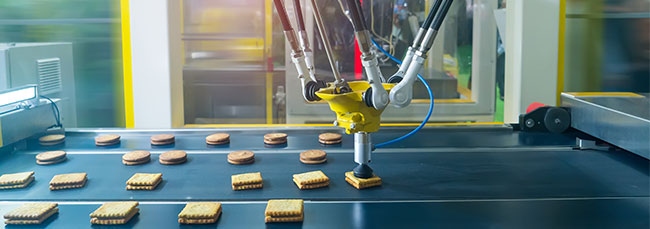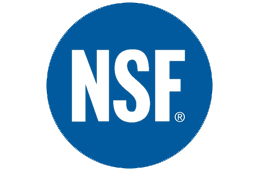ELGI Answers your Questions on Food Grade Lubricants
Want to know more about which food grade lubricant you should use in your application? The European Lubricating Grease Institute (ELGI) answers your frequently asked questions on food grade lubricants and all matters concerning FDA and NSF regulations.

What lubricants should I use in my food production plant?
H1 lubricants, also known as incidental contact lubricants, should be used in food production plants. They are not expected to, but may occasionally, come into contact with food under normal use conditions. As per requirements established by the US Food and Drug Administration (FDA), H1 lubricants must comply with 21 CFR 178.3570. This regulation establishes formulary requirements for greases and lubricants intended for use in food processing and handling applications where incidental contact may occur.
Are H1 Lubricants FDA Approved?
No, the FDA does not approve or register lubricants. The ingredients comply with FDA “Regulation 178.3570” or “21 CFR 178.3570”.
 Nye’s synthetic food-grade lubricants have been approved and registered by the National Sanitation Foundation (NSF) for use in and around food processing areas. They meet the Nonfood Compound H-1 guidelines for incidental food contact. All raw materials in these lubricants conform to Food and Drug Administration (FDA) CFR Title 21.
Nye’s synthetic food-grade lubricants have been approved and registered by the National Sanitation Foundation (NSF) for use in and around food processing areas. They meet the Nonfood Compound H-1 guidelines for incidental food contact. All raw materials in these lubricants conform to Food and Drug Administration (FDA) CFR Title 21.
Nye offers a variety of NSF-H1 lubricants. Fluorocarbon Gel 880FG is a multi-purpose grease made from silicone and PTFE. With a temperature range of -40 to 200° C, it is a high viscosity damping grease with good wear performance for machinery and instrumentation. UniFlor™ 8512-FG is a medium viscosity, chemically inert grease. Made from PFPE and PTFE, it has a wide temperature range of -50 to 225° C making it suitable for use in high temperature applications.
To learn more about all of our Synthetic Food-Grade Lubricants, check out our LubeNote.
If my product is an H2 grease is it “Food Grade”?
No, the terminology “Food Grade” is only acceptable for H1 products. H2 products are lubricants and greases not suitable for food contact.
If my product is a 3H product, can I use as much as I want in direct contact with the food?
No, 3H products are also subject to similar limitations like those of H2 products specific by application. The “FDA Regulation 21 CFR 172.878” specifies the limits for each application.
What if my lubricant is 3H, surely that is safe?
If you use the product to lubricate a mechanical part – such as a bearing, chain, slide etc. – then this is covered by H1. As stated earlier, these are incidental contact products that are subject to limitations. Remember, the use of the product has to be taken into account. It is not safe to assume 3H products can be used with little care. If they are designed to be used as equipment lubricants they usually have H1 registration too.
Should I use H1 lubricants across my facility? What about applications below the production line?
Your Hazard Analysis Critical Control Points (HACCP) assessment is the ultimate guide to this. From a safety point, it is advisable and recommended to use H1 lubricants across all feasible applications, reducing risk to minimize any possible use of H1 lubricants. This applies below the production line as well. It is about reducing the risk of contamination and running a lubrication program as cleanly as possible.
Download the full article from ELGI on Food Safe Lubricants.


